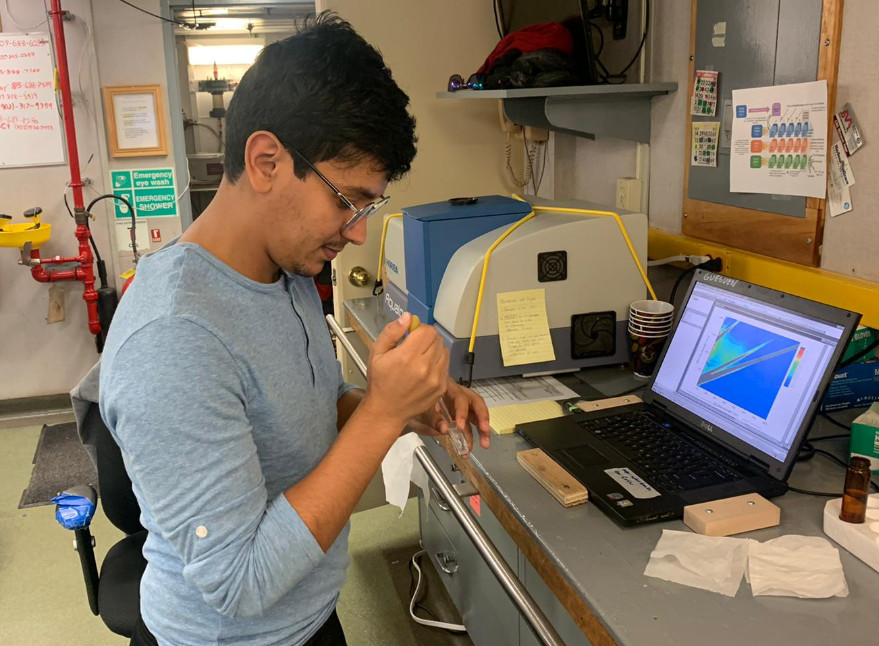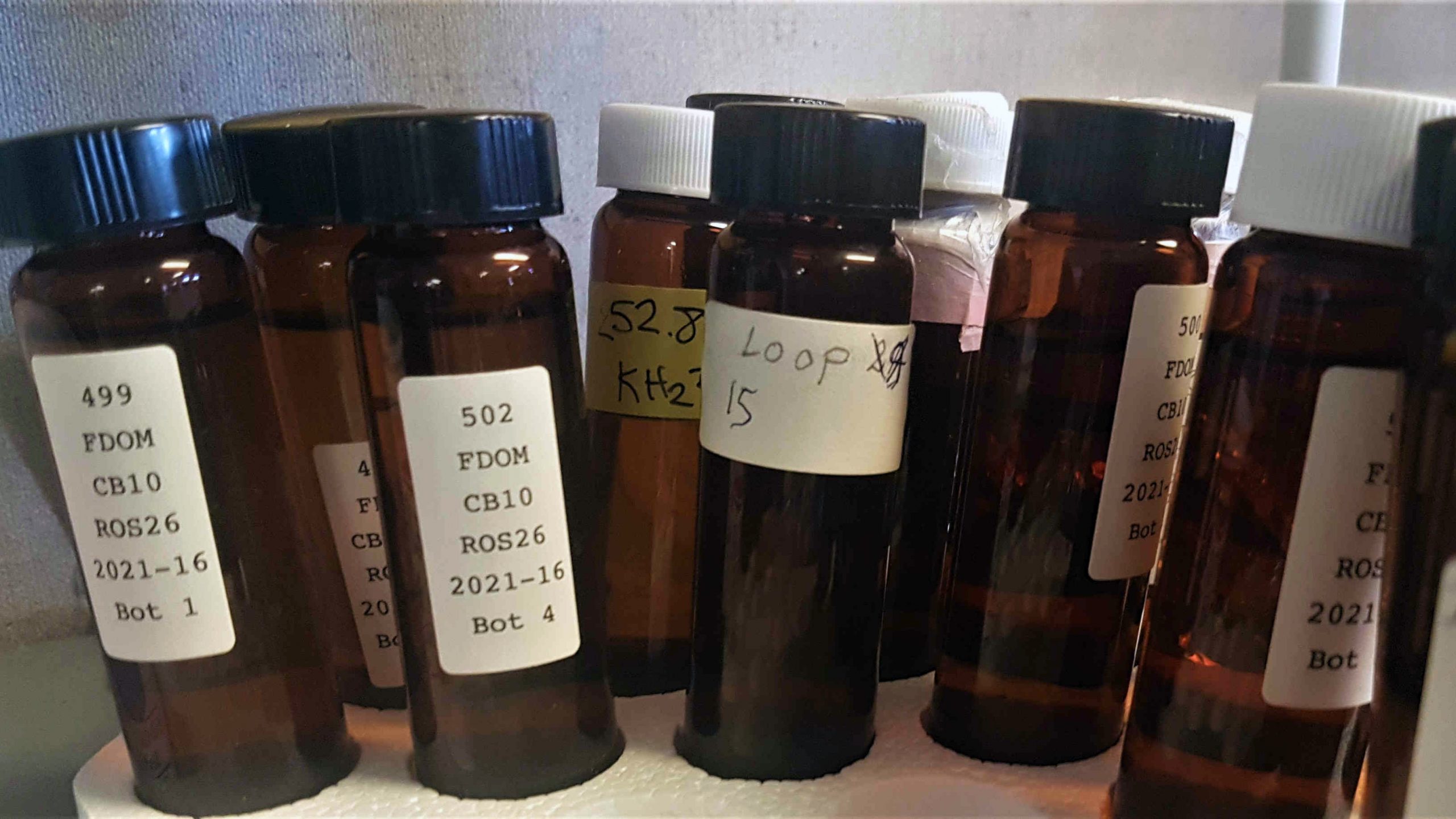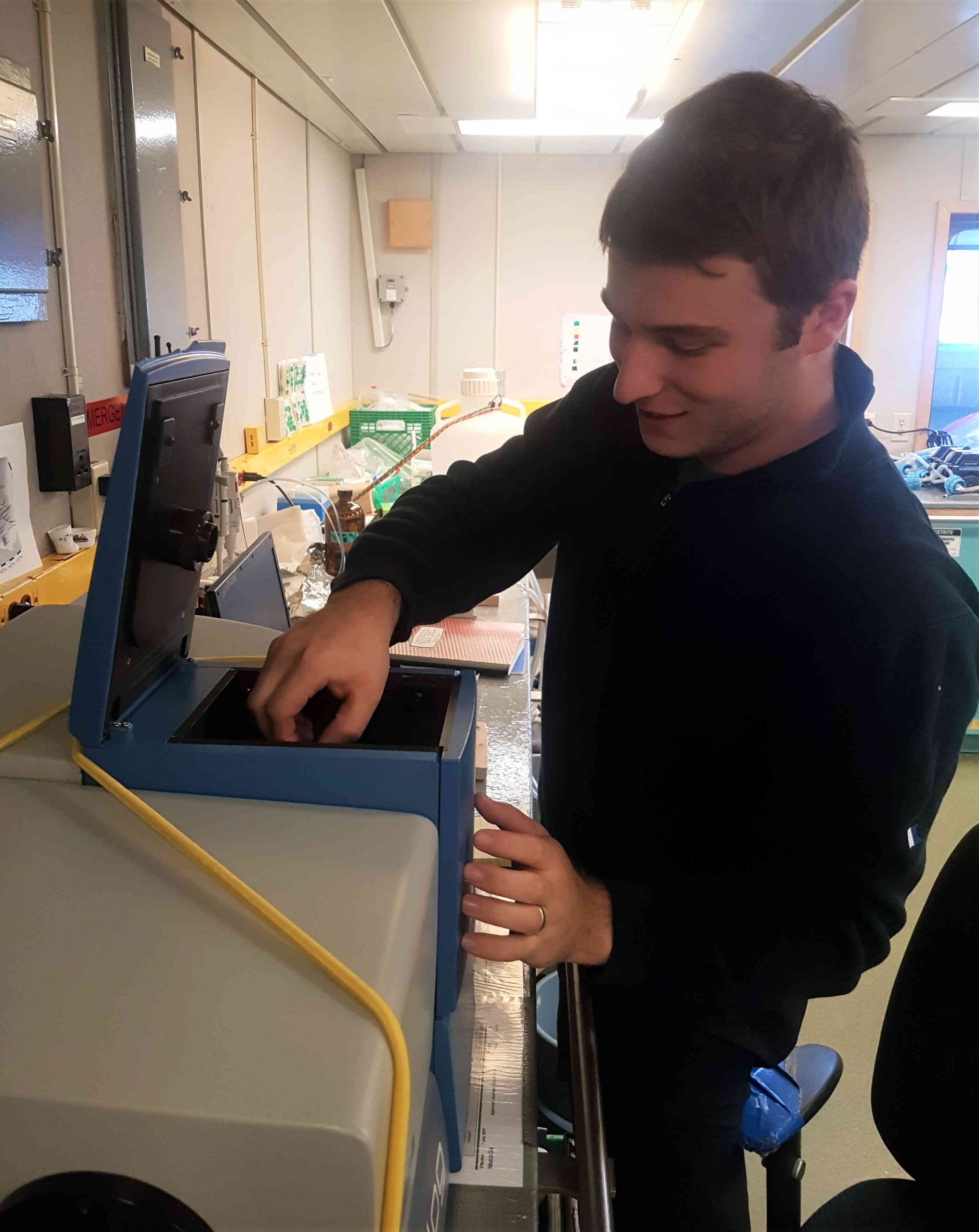Dispatch 8: Sampling at Sea - Dissolved Organic Matter
Nicolas Sylvestre
August 29, 2021
I am Nicolas Sylvestre, PhD student at the Université de Sherbrooke under the supervision of Dr. Céline Guéguen. This year is the third time that I have had the great opportunity to be part of the JOIS/BGOS expedition in the Canada Basin aboard the CCGS Louis S. St-Laurent. My supervisor Céline and my lab-mate, Mohamed Gamrani from Sherbrooke are also on board for this scientific mission.
During the expedition, we will collect more than 600 samples for the analysis of Fluorescent Dissolved Organic Matter (commonly called FDOM).
After each science station, we start our fluorometer, clean the quartz cuvette and analyze the freshly collected samples to build Excitation-Emission Matrices. Back at home, we analyze them to find fluorescent components and their behavior across the Basin. This will help in the never-ending quest of characterising the largely uncharacterized pool of Dissolved Organic Matter (or DOM).
DOM is a great carbon sink, but very little is known about its exact chemical composition. We take advantage of this time in the North to collect larger samples, processing them with a solid-phase extraction to concentrate their organic compounds. The extracts will be analyzed in high-resolution mass spectrometry to characterize their multiple components.
This year, we are also conducting incubations to measure DOM reactivity in different conditions. Essentially, we filter a lot of seawater and let it sit in the ship’s refrigerator. At predefined times, my lab-mates and I sample the incubations and run analyses to assess how DOM chemical composition changes with time.
Terrestrial DOM can be used to follow freshwater inputs in the ocean. There are also other markers, such as barium concentration. Barium comes from land rock and is delivered to the Arctic Ocean by the Mackenzie River. Mohamed’s work uses this property to determine the fate of the freshwater that ends up in the ocean. The samples collected from the CTD rosette will be analyzed at home.
With all the data and samples gathered at sea, we will have plenty of work ahead of us before next year’s expedition!


